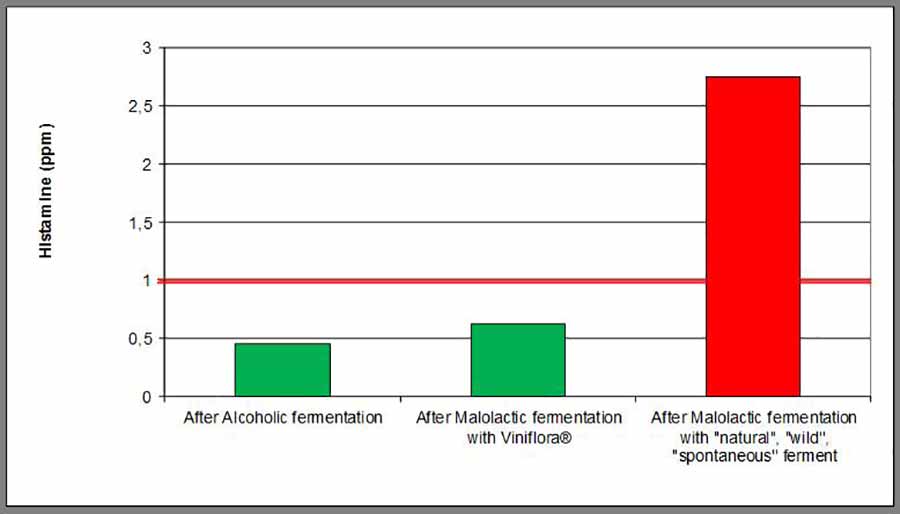When we launched the first VINIFLORA® freeze-dried products ready for direct inoculation in wine, our first customers were some of the most famous, sometimes iconic, wineries producing red wines in Europe and USA that applied a famous principle: “If we can make it safer for our customers, we have to do it’’.
And indeed, wines are safer when using VINIFLORA® oenological cultures, as we have selected strains from nature that are not able to produce histamine, putrescine and some other biogenic amines during malolactic fermentation. Spontaneous, wild bacteria may have the ability to produce a high concentration of biogenic amines, particularly histamine, putrescine and cadaverine during malolactic fermentation. Chr. Hansen’s team of experts know how to avoid this.
Today, our expertise in minimizing the production of histamine is renown worldwide, and we have helped several wine companies around the world to perfectly define their fermentation program to avoid the production of histamine, to name but one amine.
This technical expertise now satisfies consumer demand in some part of the world, such as northern Europe. Ever more consumers are aware about the impact of histamine when they consume a moderate amount of wine. Red-face Syndrome and sometimes minor headaches are examples of symptoms associated with the presence of biogenic amines, and the alcohol contained in a glass of wine can enhance the absorption and the impact of histamine even at low concentration.

